Grow These 8 Perennials That Multiply With Ease To Fill Every Corner of Your Garden for Free – Without Lifting a Finger!
Want to expand your garden without any effort? These 8 perennials that multiply with ease are just what you need.
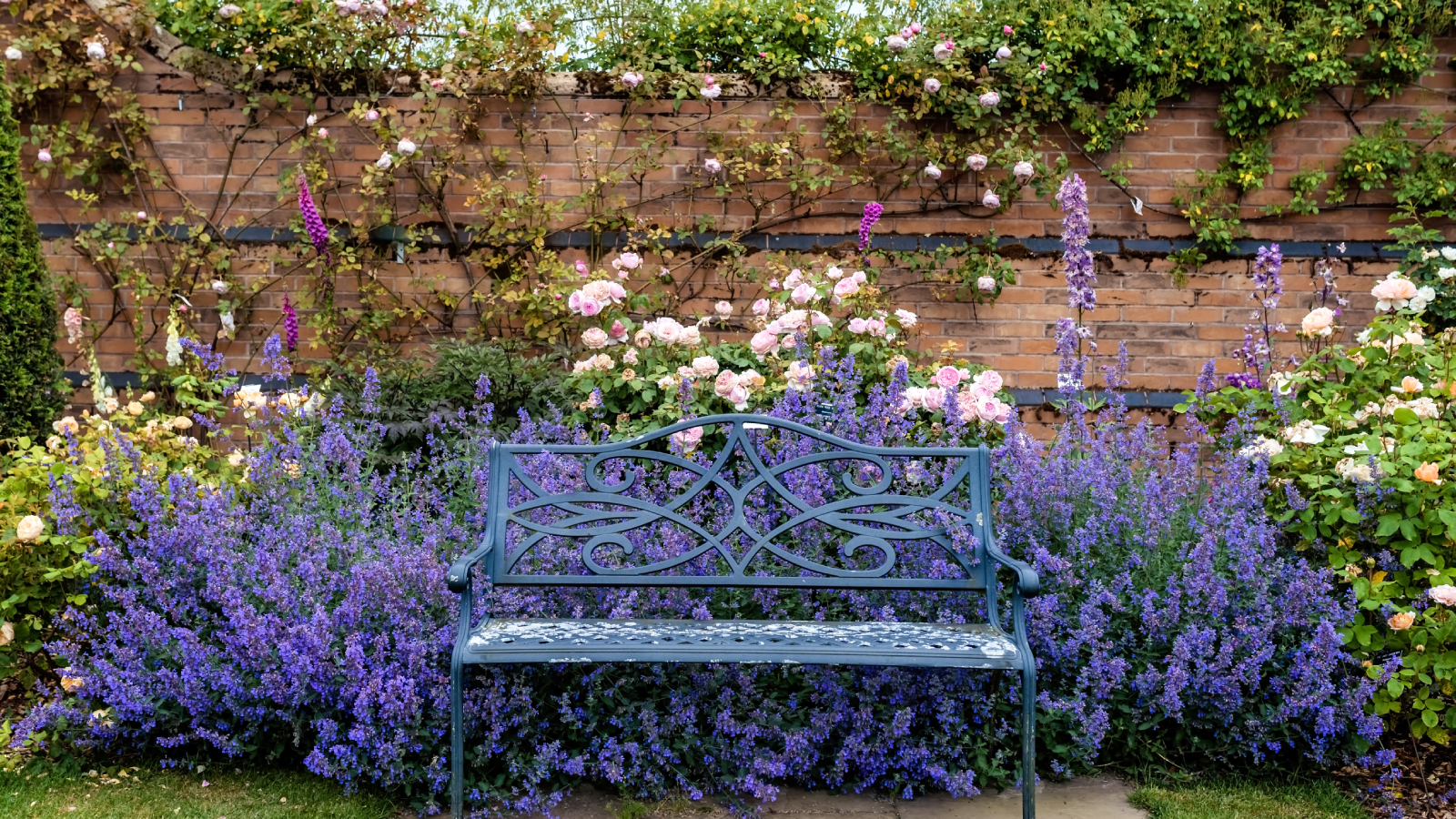
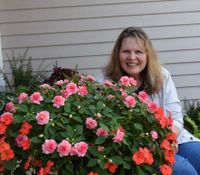
If you have plenty of garden space and would like to increase your number of plants with minimal effort, there are lots of perennials that multiply easily all on their own. Many perennials spread via rhizomes, stolons, seeds, or bulbs, which saves you the trouble and expense of propagating or buying more plants.
When planting flowering perennials that thrive on neglect like these, be sure to space them out generously so they have room to spread. It will take two or three seasons to fill in and some will increase faster than others. They will spread and/or reseed on their own, but many can also be divided in spring or fall for more plants faster.
Let’s take a look at low-maintenance perennial plants that multiply with ease without any intervention. Plus, I’ll share which three perennials to avoid because they spread too easily and can become invasive.
Low-Maintenance Perennials That Multiply With Ease
Here are best non-invasive perennial plants that increase size and spread on their own with no effort from you, making them the perfect choices for a low-maintenance landscape.
1. Bearded irises
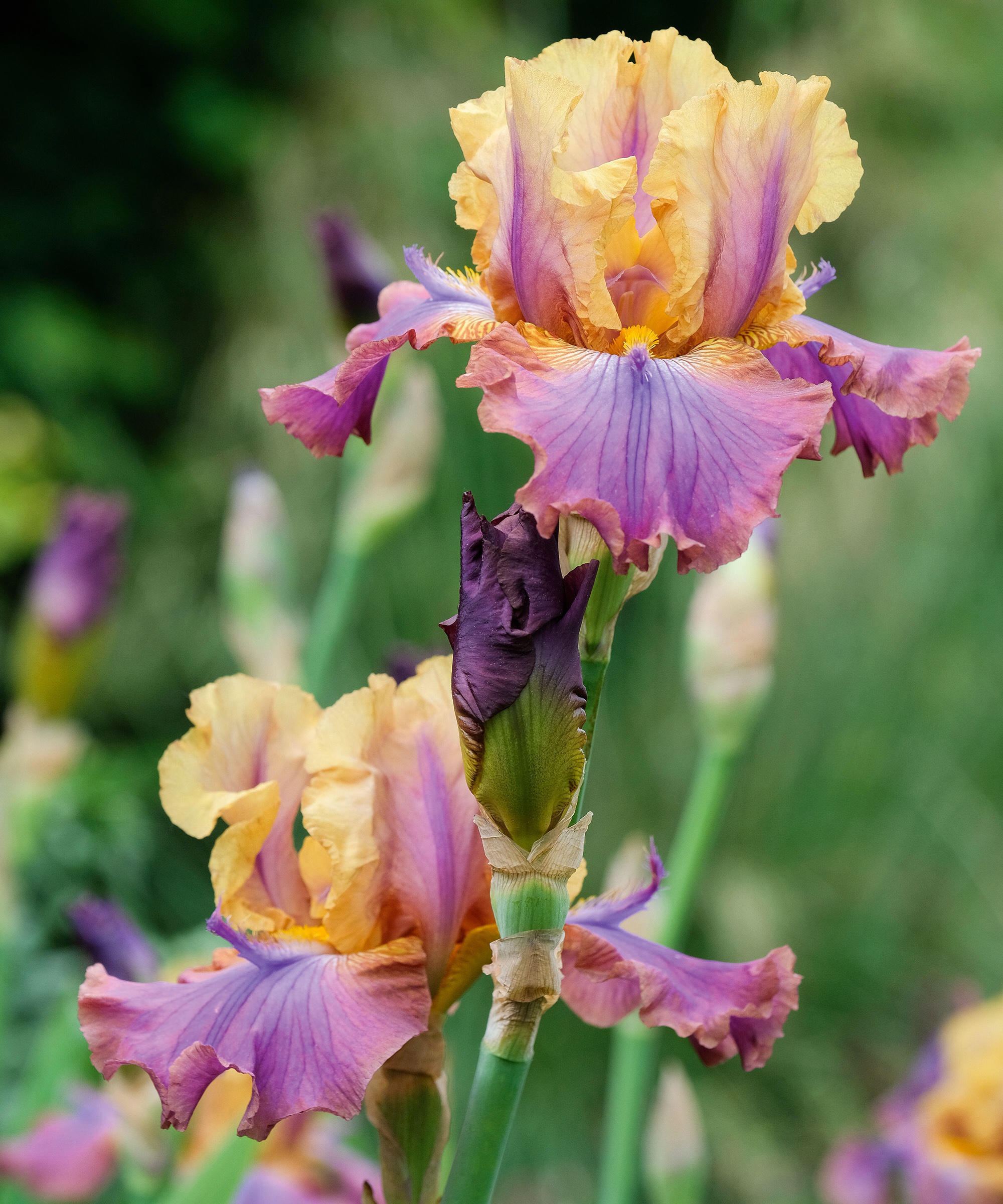
Bearded irises (Iris germanica) are the quintessential passalong plant. In spring, their large, colorful flowers are a common sight in neighborhood yards, parks, and botanical gardens.
One rhizome increases by at least two, sometimes more, offshoots after it blooms. Those offshoots bloom the next year, then produce their own offshoots. In three to four years, the whole clump usually needs to be divided to keep them vigorous.
Bearded irises need well-drained soil and full sun to grow best in USDA planting zones 3 through 9.
Sign up for the Gardening Know How newsletter today and receive a free copy of our e-book "How to Grow Delicious Tomatoes".
Explore tons of beautiful bearded irises at Home Depot in almost every color imaginable.
2. Catmint
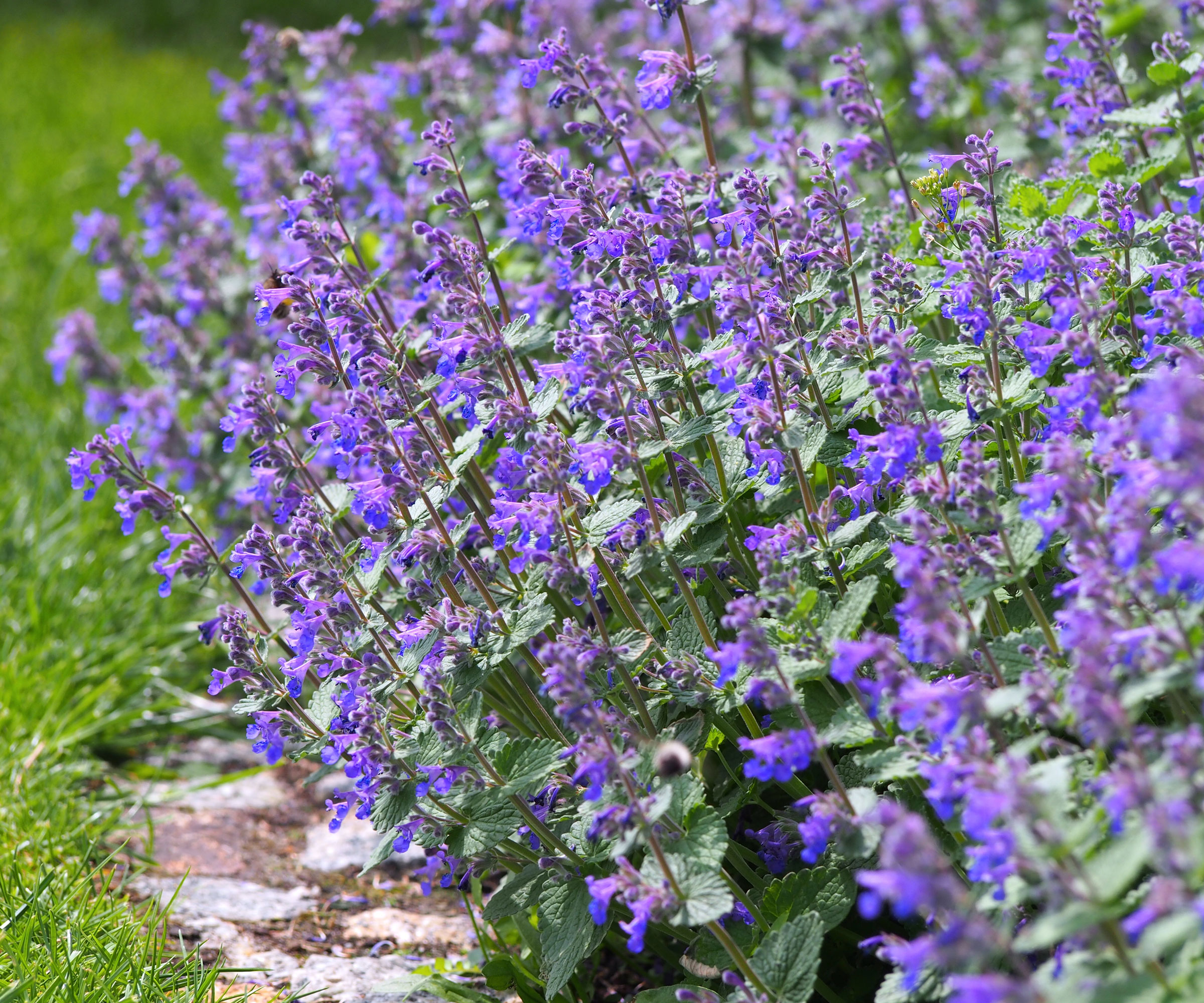
Catmint (Nepeta spp.) is a popular perennial pollinator plant, attracting bees and butterflies with its white and blue or purple flower spikes. It grows in a clump that expands each season. The sterile hybrid, N. x faassenii, does not produce seed, but other varieties will reseed.
The fragrant, gray-green leaves of the catmint plant are said to repel aphids and squash bugs. Grow catmint in full sun in well-drained soil in USDA zones 3 to 8.
3. Columbine
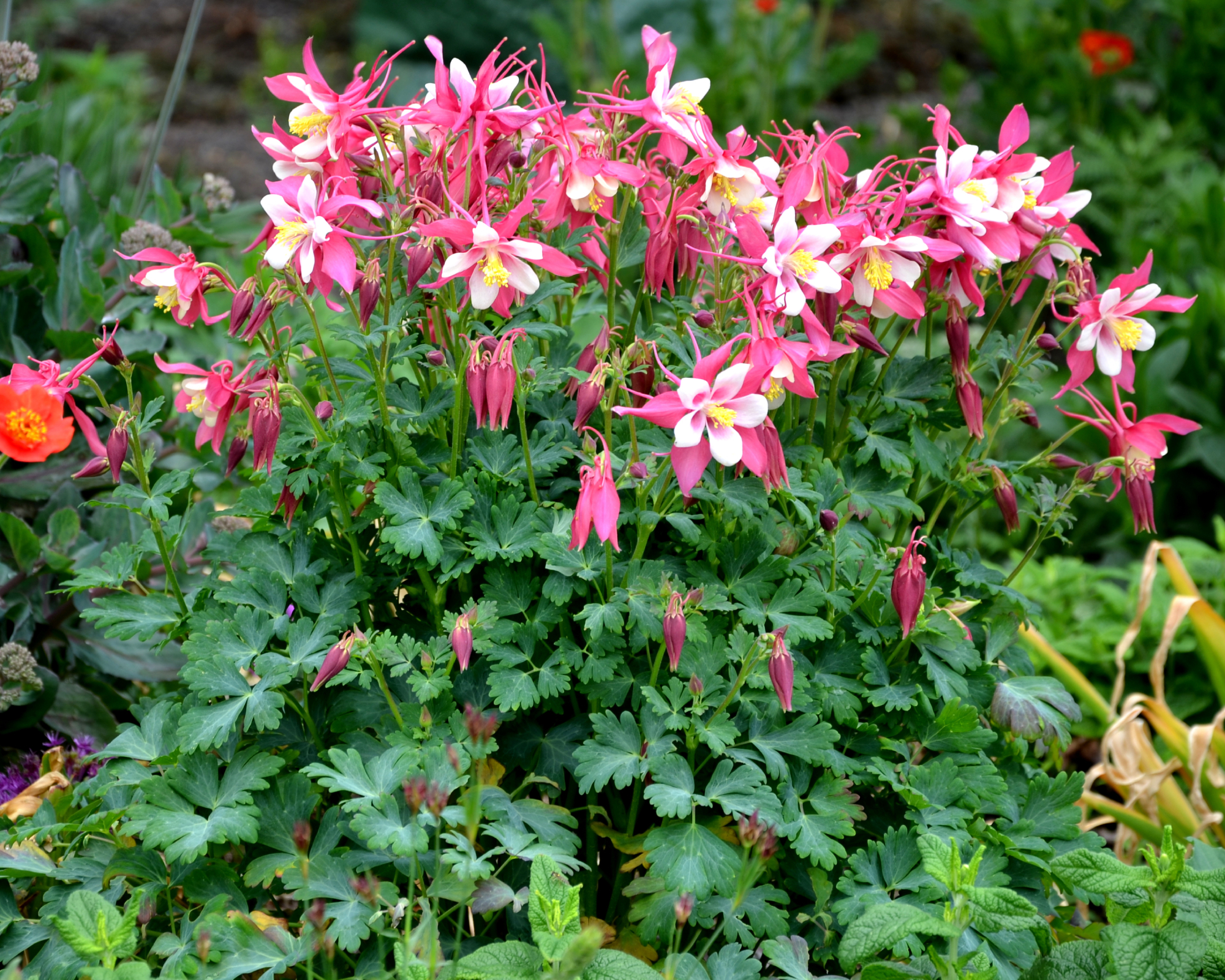
Columbine (Aquilegia spp.) is one of the most prolific self-seeding garden plants and once you plant it, it will never be alone. This perennial’s bell-shaped flowers bloom in spring in colors such as red, purple, pink, and white and are a hummingbird favorite.
Columbine prefers a woodland or part shady location in moist, well-drained soil in USDA zones 3 to 8. Even though it is a short-lived perennial, the seeds keep it going for a long time.
Shop stunning columbine cultivars you can easily start from seed on Amazon.
4. Daffodils
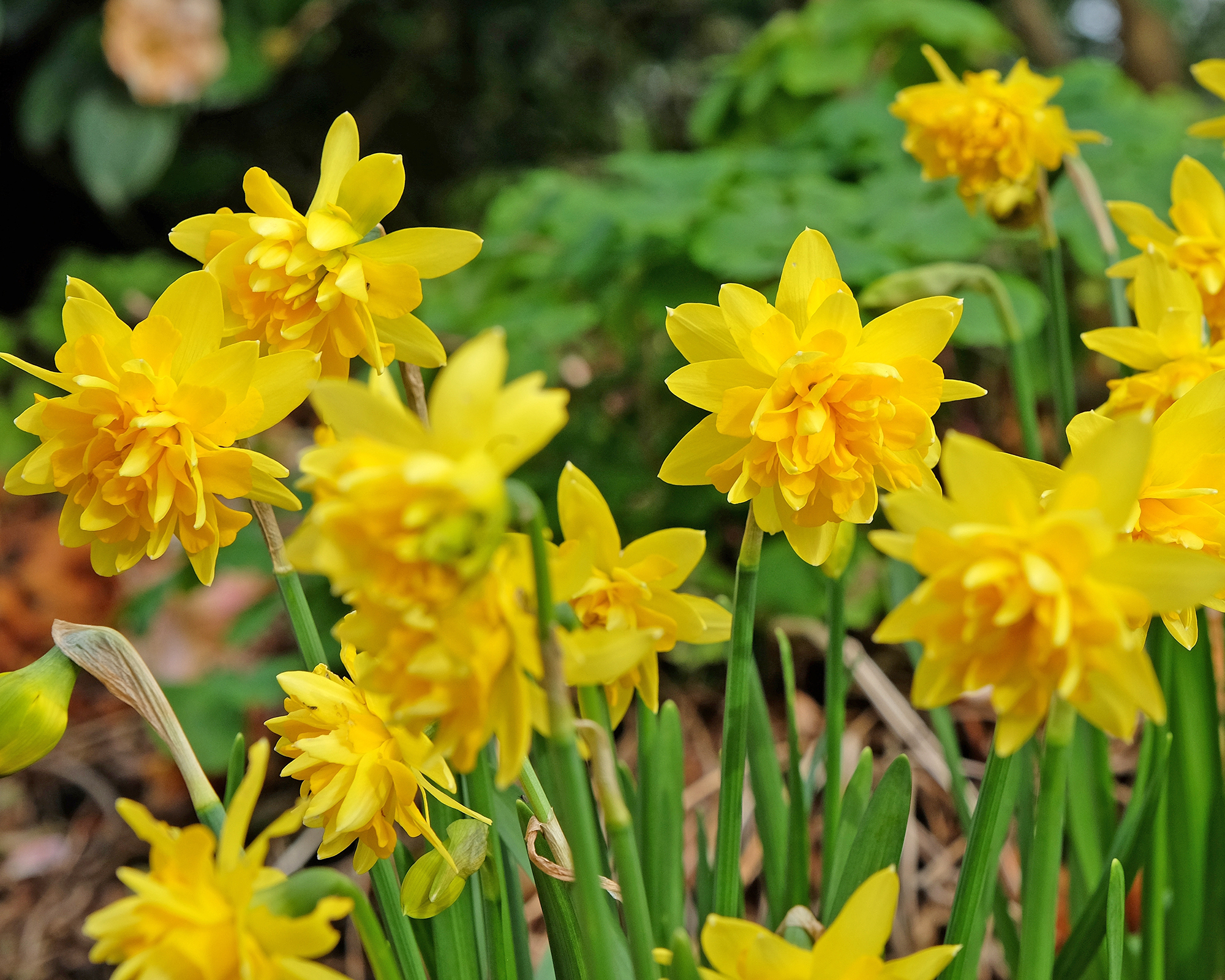
Daffodils (Narcissus spp.) are planted in the fall and bloom in the spring. They have nodding heads of traditional yellow, but also come in combinations of white, orange, pink, and yellow in varying shapes such as trumpet, large cup, and double like the ones pictured above.
In the spring, after blooming, allow foliage to die back naturally to regenerate the bulbs. Each year, the bulbs will increase. After about five years they will need dividing to reinvigorate the clump.
They prefer well-drained soil in full to part sun in USDA zones 3 to 8.
Stock up on high-quality daffodil bulbs from Burpee now so you’re ready to plant this fall.
5. Daylilies
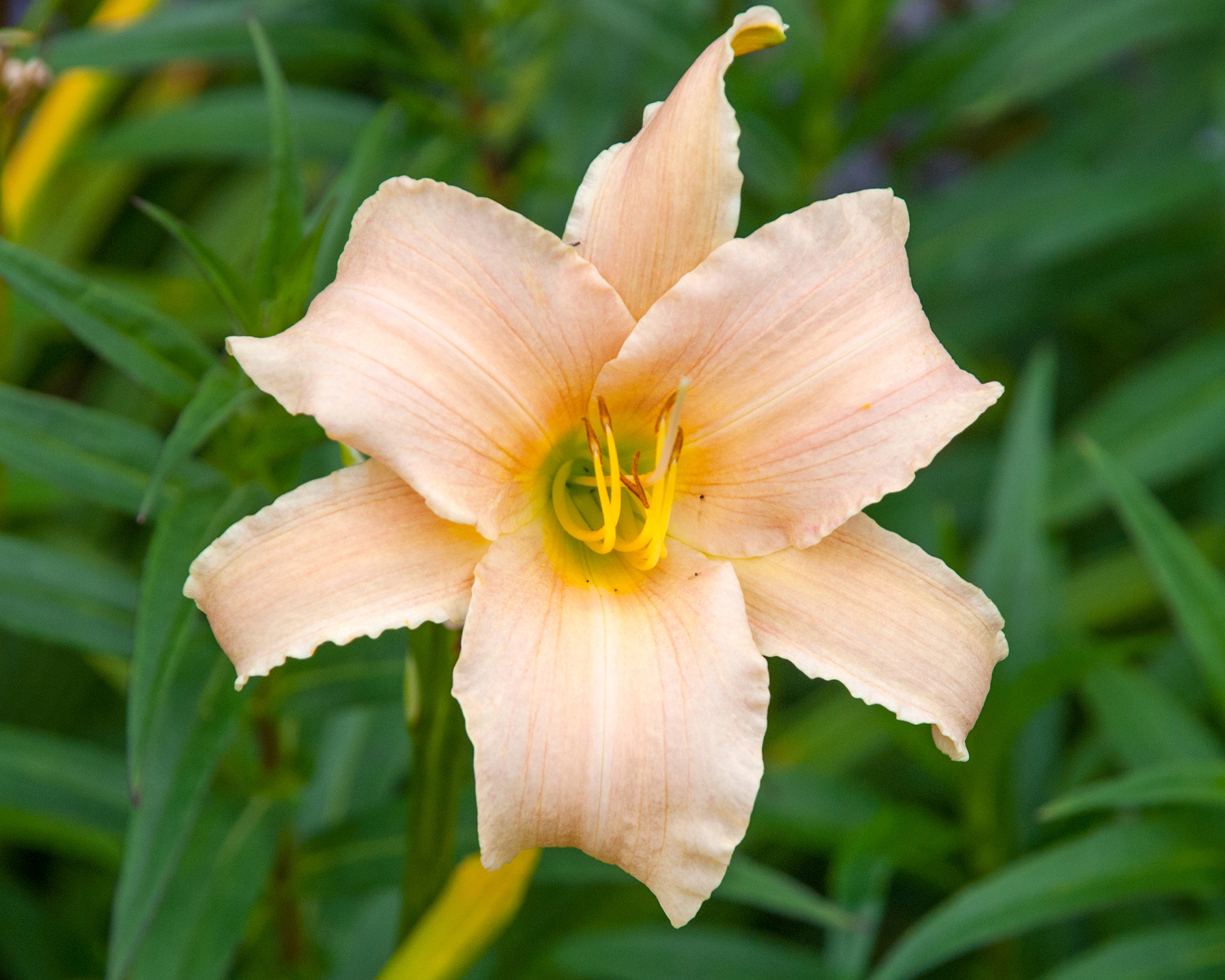
Daylilies (Hemerocallis spp.) form a clump of grass-like leaves and in early summer, then send up scapes of trumpet-shaped flowers in many colors and bicolors, including red, orange, yellow, burgundy, cream, and pink. The clump increases each year and so does the flower count.
Daylilies bloom early, midseason and late, and certain cultivars rebloom. This perennial is not a true lily and flowers last only a day. Grow daylilies in full to part sun in USDA zones 3-9.
Be sure to avoid the orange “ditch lily” or old-fashioned daylily often sold at fundraisers or passed along from one unsuspecting gardener to another. This type of daylily is extremely aggressive and plows right over surrounding plants.
Explore dozens of dazzling daylilies from Home Depot and find the perfect one for your garden.
6. Coneflowers
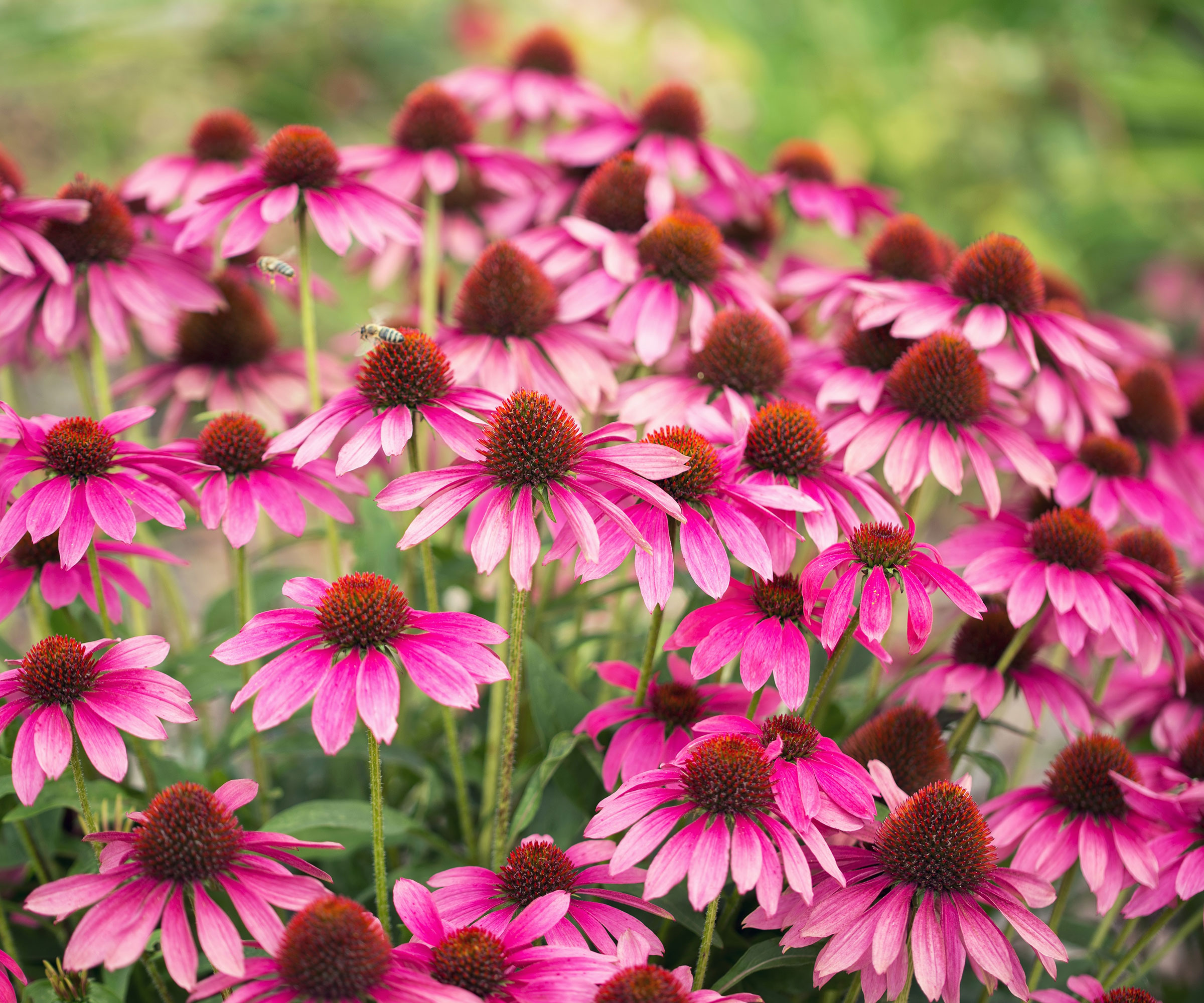
Purple coneflower (Echinacea purpurea) is a popular U.S. native plant grown for pollinators, birds, and its attractive, daisy-like, rosy-purple blooms with drooping petals. Newer types of coneflowers may also bear red, white, yellow, pink, or orange flowers.
The clump increases each year, but it happily reseeds if the central seedcone on the flower is allowed to mature. Songbirds eat the seeds so it is beneficial to wildlife to let some of the stalks go to seed. Coneflower cultivars will not come true from seed. So divide plants if you want more of the exact same cultivar.
Grow coneflowers in full to part sun in well-draining soil high in organic matter. Plants can tolerate poor soil and drought in USDA zones 3 to 9.
7. Stonecrop
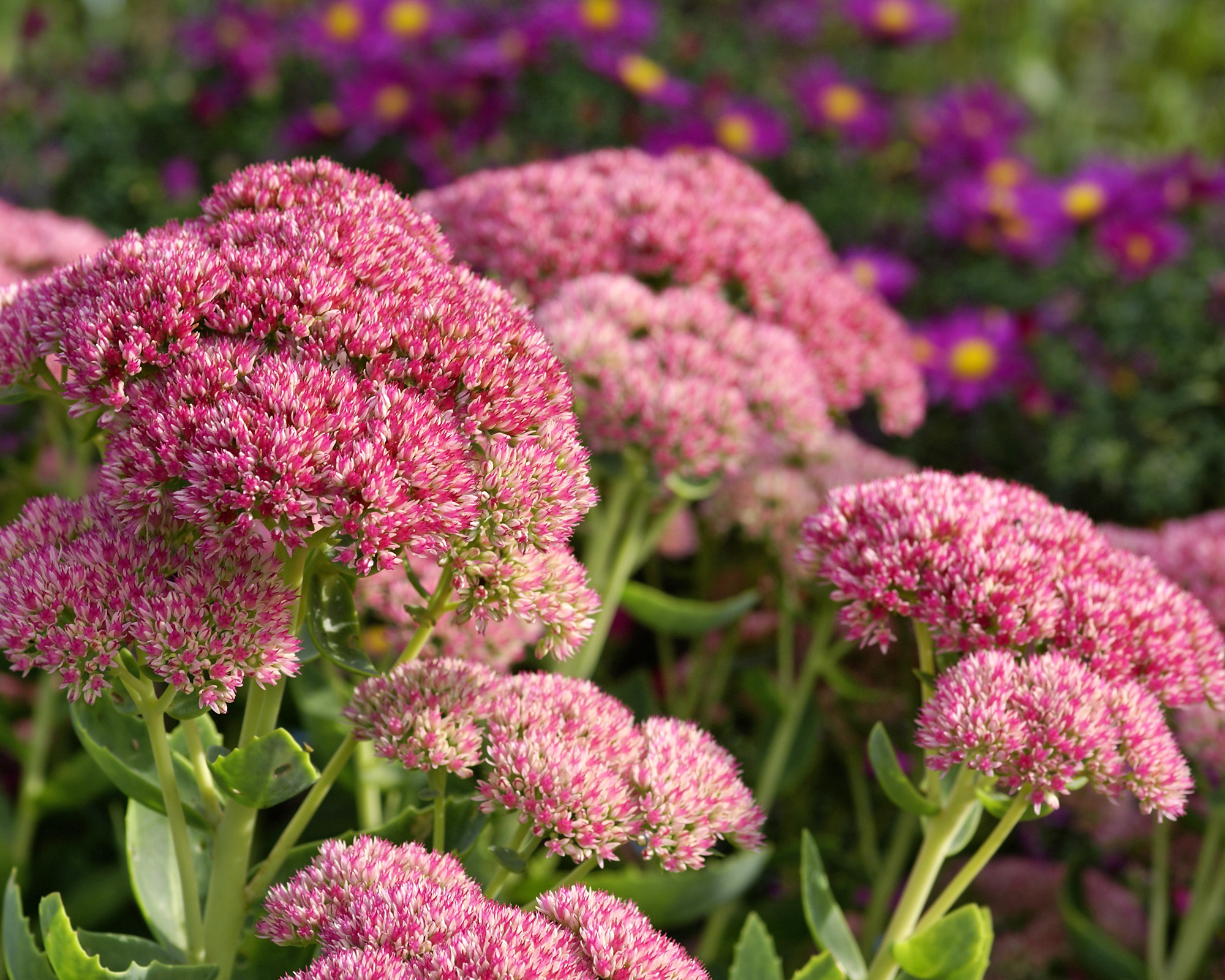
Stonecrop (Hylotelephium spectabile) is a showy, clumping, succulent perennial that blooms from late summer to fall. The tall stems are topped by a flat cluster of red or pink star-shaped flowers that attract butterflies and other pollinators.
Grow stonecrop in full to part sun in well-draining, poor soil in USDA zones 4-9. It is drought tolerant and too much water will cause root rot.
Besides the expanding clump, this type of sedum is easy to propagate by stem cuttings. Simply break off a 4 or 5 inch (10-13 cm) piece of stem, remove the lower leaves, and stick it in the ground or in a pot of soil. The plant quickly roots and grows.
8. Solomon’s seal

Solomon’s seal (Polygonatum odoratum var. pluriflorum) is a woodland plant with arching stems and white, bell shaped flowers in spring.
The clump easily multiplies by rhizomes, which are easily divided to increase the number of plantings. Simply start from the edge of the clump and dig up as many rhizomes as you need. It can be slow to establish, but once it does, it increases readily.
Grow this perennial in light to full shade in soil with high organic matter in USDA zones 3 to 8.
Watch Out for These Perennials That Spread Too Easily
Some plants may spread too aggressively and “run over” your other plants. In that case, you may want to remove them to stop invasive plants from spreading before it’s too late. If you plant an invasive spreader, make a point to dig it up each spring and divide it to keep the plant in bounds.
1. Black-eyed Susan
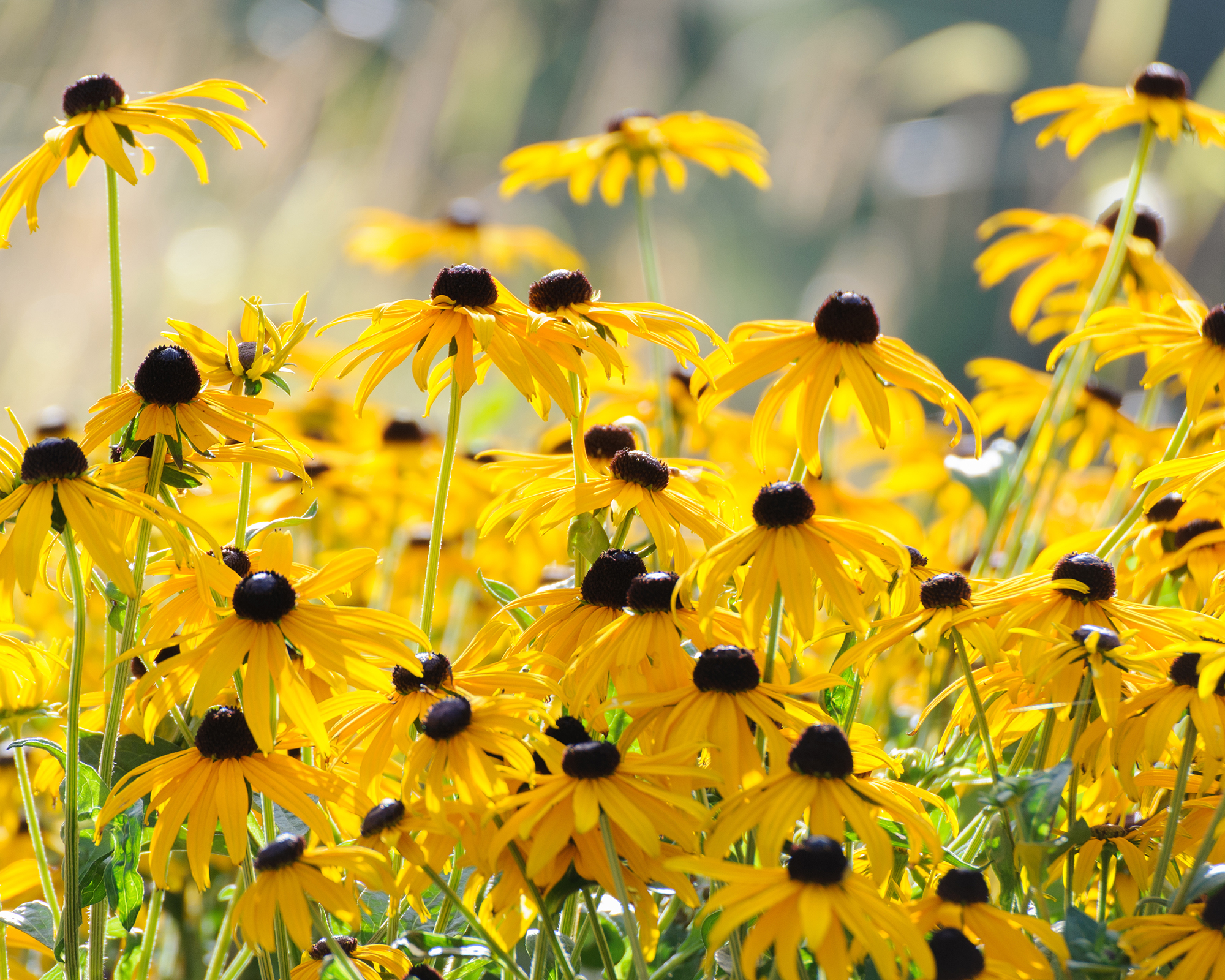
Black-eyed Susan (Rudbeckia hirta), for example, can increase quickly, but it is hard to pull up in unwanted areas and must be dug out by hand. If you want to grow a low-maintenance native plant garden and you don’t mind black-eyed Susans growing wherever they choose, then this plant is very easy to grow and produces beautiful yellow blooms in mid to late summer.
2. Obedient plant
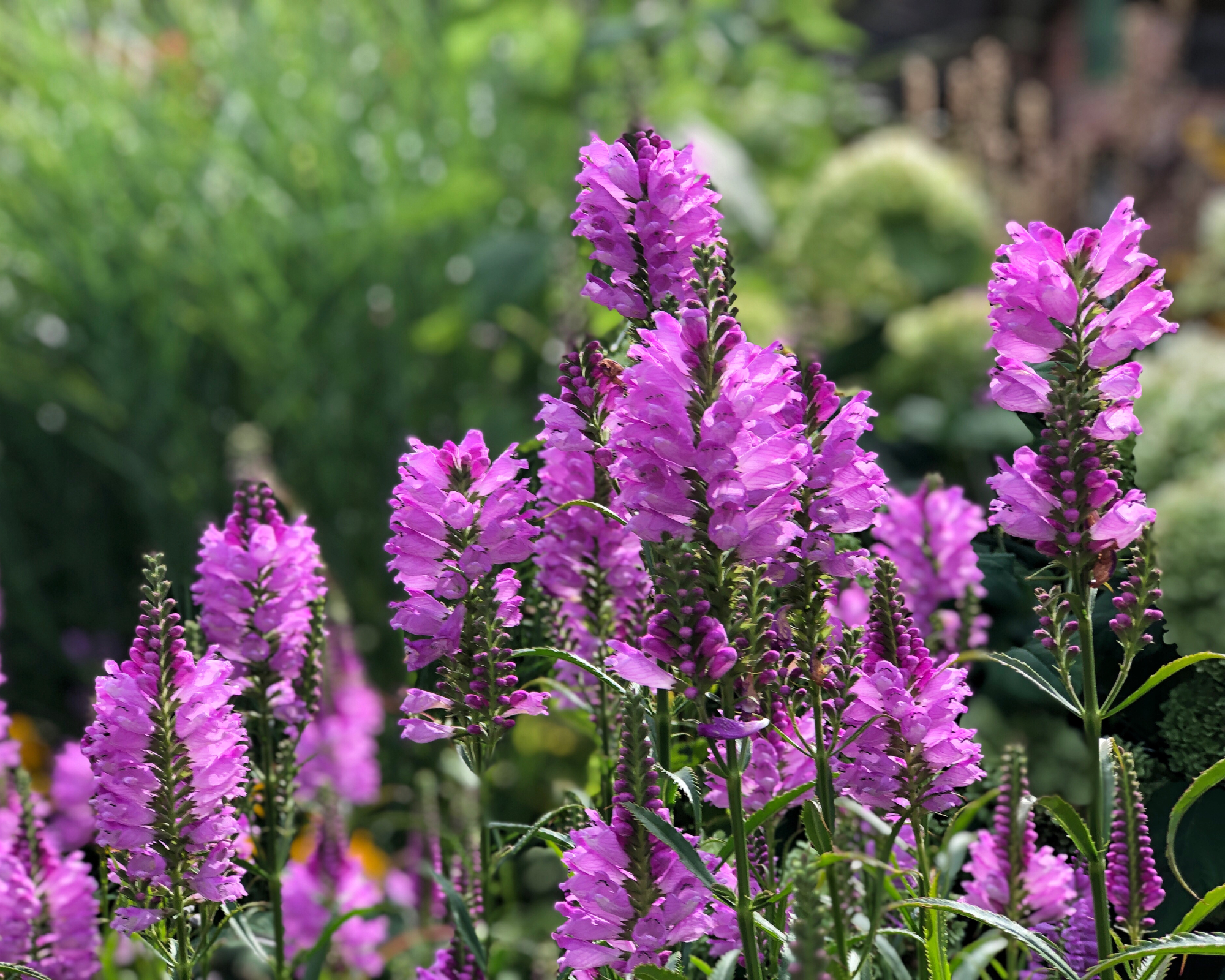
Another aggressive multiplier is the obedient plant (Physostegia virginiana), which isn’t very obedient at all when it agressively spreads by stolons and seeds. Its pink or white spikes attract hummingbirds, bees, and butterflies. Again, it’s a good choice for a more wild and free native plant garden. But know that it will grow where it wants.
3. Forget-me-not
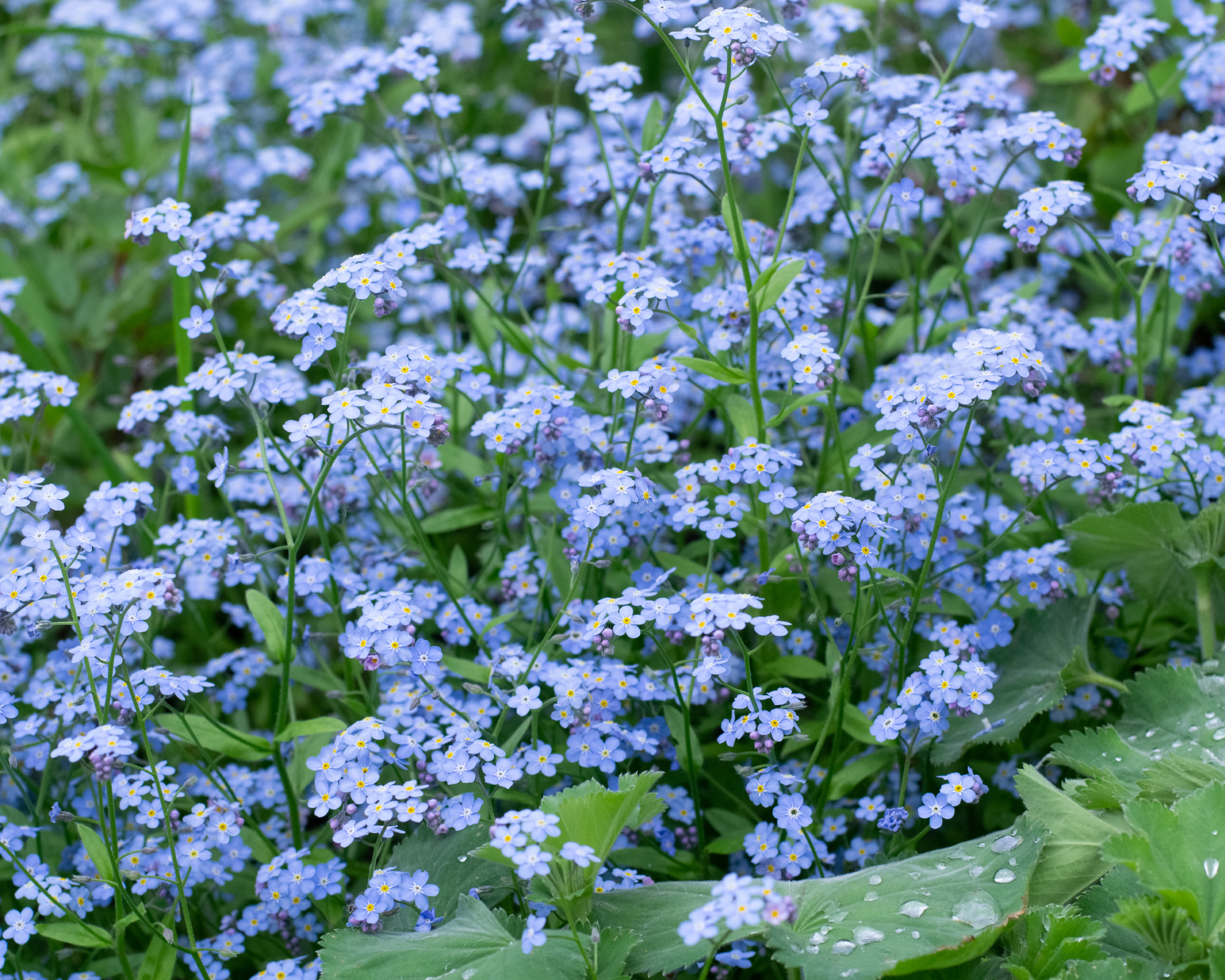
The blue, spring-blooming forget-me-nots (Myosotis scorpioides) also can overtake your other plants if not kept in check. This plant, unlike the other two, is an exotic species. It is invasive in many parts of the U.S. so it’s safest not to plant it at all. Instead choose a native forget-me-not species like Myosotis alpestris.
This article features products available from third party vendors on the Gardening Know How Shop. Keep in mind that our plant inventory is limited—so if you’re thinking of purchasing, don’t wait!

After graduating from Oklahoma State University with a degree in English, Susan pursued a career in communications. In addition, she wrote garden articles for magazines and authored a newspaper gardening column for many years. She contributed South-Central regional gardening columns for four years to Lowes.com. While living in Oklahoma, she served as a master gardener for 17 years.